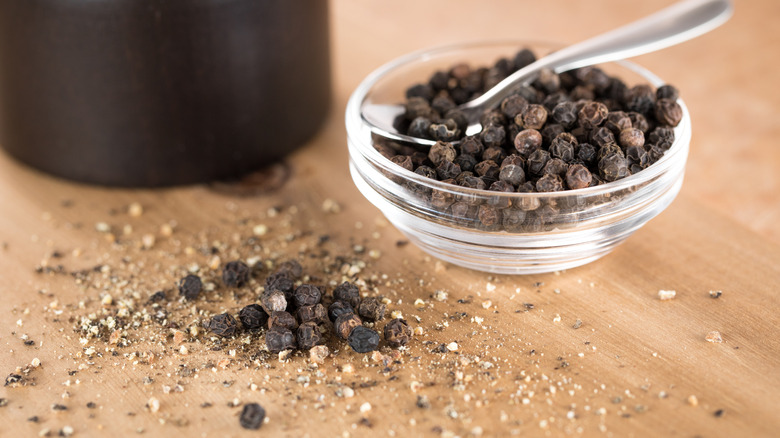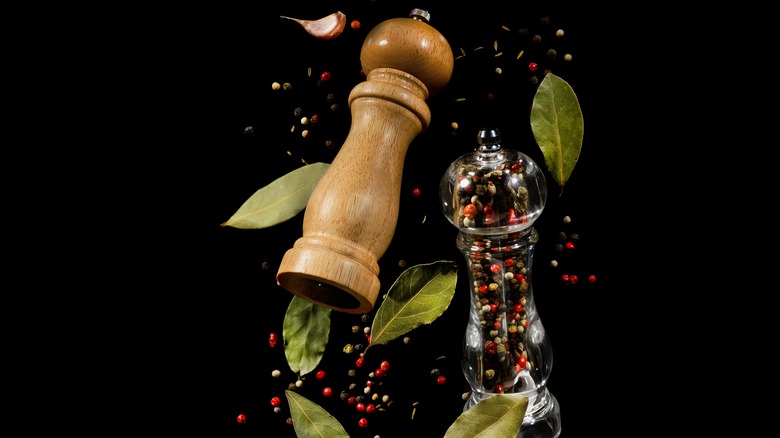The Genius Solution To Your Fresh-Cracked Pepper Measuring Problems
A seasoning cabinet just wouldn't be the same without black pepper – and we're not talking about the ground kind. While there's nothing wrong with the convenience and mild spice levels of ground pepper, we'd like to spotlight its more assertive competitor: cracked pepper.
There's just something about freshly-cracked pepper that just tastes different. Perhaps the obvious word "fresh" comes to mind, but Food Champs describes this one as "bold," "intense," and "noticeable." This makes sense because cracked pepper pieces are bigger than the soft flecks of ground black pepper. So aside from the visual appeal, the source explains that there are crunchy textures and more pronounced peppery flavors here.
Spiceograpy also notes that ground pepper tends to evaporate quickly because of how much surface area it covers, which is the opposite for cracked pepper. In other words, cracked pepper likes to linger and hang around, while ground pepper likes to leave the food party early.
But cracked pepper has one drawback: you have to work for it. You have to take a pepper grinder and twist and turn (sometimes endlessly) in order to achieve the desired peppery consistency within a dish. And this can be especially annoying for home cooks who like to measure spices out. Before today, we thought this couldn't be done. Now, we're proud to share a useful hack to take the guesswork out of measuring cracked pepper.
Count those turns
Cracked black pepper tends to fall wherever it pleases, which makes it difficult to measure. But perhaps we've been approaching this all wrong because according to Epicurious (who noted this hack from the "Small Victories" cookbook by Julia Turshen), it's the number of twists and turns that actually matter.
All you have to do is count the number of twists it takes to get one teaspoon. Peppermate suggests using a bowl and starting out with one or two twists at a time. See if this is enough to make one teaspoon. If not, twist one or two more times, or until one teaspoon of cracked pepper is achieved. (The cracked pepper in the bowl should fill one teaspoon exactly.)
Next, memorize or write down the number of turns it took to reach one teaspoon. For this particular Epicurious author, they stated that their pepper grinder took 50 turns to achieve one teaspoon of cracked pepper (though this figure may certainly vary depending on which type of grinder you use). So in this case, you would use the 50 turns to one teaspoon amount to calculate the number of teaspoons in other dishes. For example, if a dish calls for ½ teaspoon of cracked pepper, then you'll know to turn the grinder 25 times. Or, if a dish requests one tablespoon of cracked pepper, then be prepared to twist and turn 150 times, since there are three teaspoons in one tablespoon. This hack certainly doesn't cut down on the actual work of turning your pepper grinder over and over again, but it does cut out the guesswork.

